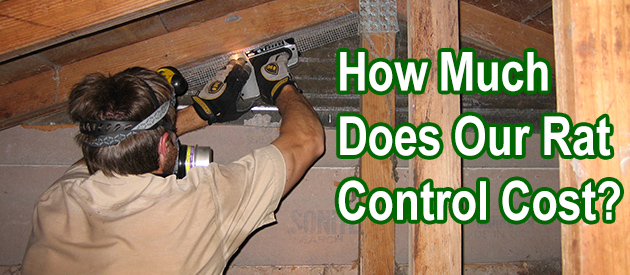Hennepin County, Minneapolis Rat Control Situation:
Hi, David, Thank you very much to establish your very educational and candid website. I bought a house half a year ago and it had rats in the attic and in the crawl space. I hired a rodent removal guy to take care of the problem. I spent almost $1000 but I still had rats - he didn't seal all the entry points. Anyway, I then did a lot of research in rats. lol. According to my rodent guy, there was about 10 rats living in my attic. But his trap caught none after sealing all the holes (He thought he did but there was two crawl space vent open). He then claimed that all rats gone because they are "scared". Later I set traps myself and I caught two large roof rats (really large, almost 12 oz each I would say). After that, no more caught. In October, I hired an insulation company to remove ALL the batt insulation from my attic. There was still thousands of droppings left on the joist bays. I painstakingly vaccuum them out (me wearing face masks). Now the attic is clean. However, I could not find ANY gnaw marks on wood, nor electric wires, nor on anything else. Why is that? How could it be? This house had tens of thousands of rat droppings in the attic, thousands of droppings in the garage and thousands in the crawl space. But I am not able to spot their damage other than the droppings? I thought rats have to chew on stuffs to keep their teeth from growing too long. I hope you could help answer this question. It always bugs me if there is something unexplainable. Thanks! Guangchi from Minneapolis Area
Minneapolis Rat Control Tip of The Week
Why Don't Repellents Work Well To Get A Rat Out Of The Attic?
The urgent need for people to get rid of rats in their attic has made many consider humane removal methods apart from trapping and killing, one of which is the use of repellents. But here is the question! Do repellents work in getting rats out of attics?
The main idea of a repellent is to make the environment unsuitable for rats. This is achieved by using several techniques such as, scents and sound emissions. Although there is a wide range of repellents to choose from, the fact is that the use of repellents might not give you the kind of result that you desire in the long run. It might help keep them away for a while, but when the effects of the repellents subside, they will come back.
Let's take a look at some supposed effective rat repellents and how they were designed to work. With this, you will have a clear picture of the result you might get when you choose to use repellents to get rid of the rats in your attic.
Scent repellents are one of the most common repellents that are readily available in stores. This repellent is designed to use intense scent to either irritate or nauseate the rats. When used the first time, this might help repel the rats as intended. But with time, these rats will get used to this scent and will tend to stay until they get accustomed to it.
Another commonly used rat repellent is mechanical repellents. Apart from being ineffective, they are also very expensive. These repellents are designed to use sound and light waves to repel rats in the attic. This will also not give the desired results simply because rats are intelligent animals and will figure out that the mechanism can't cause any harm to them.
Having realized this, the best thing you can do to repel rats in your attic is by making it less appealing to them. This can be done by cleaning out the trash and making sure there are no hiding places for the rats.


